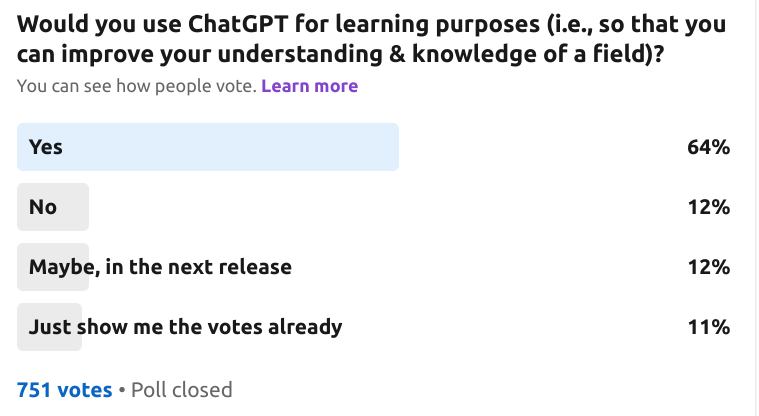Semantics, Context, and Effective Communication - How Being on the Same Page Can Aid an Organization or Project in Data-related Work

Relevant pain points of organizations and projects today
If you have worked in an organization on a data-driven project, you may have experienced the disconnect between its business and technical sides. When you have professionals from different backgrounds in the same room, trying to deal with the specifics of a complex problem, such as those involving data architecture and analytics, it's inevitable to come across this issue.
After all, each discipline often has its own definitions of various terms (e.g., in software engineering, a feature is a particular characteristic of an application, which is there by design; in data science, a feature is a refined variable that's ready to be used in a model). Beyond that, often the professionals in these disciplines have different experiences, diverse language backgrounds, and unique perspectives on the matter at hand. As a result, finding consensus on their understanding of something is not only rare but also challenging.
What’s more, many organizations view semantics as something overly specialized and irrelevant to them. They are happy to talk about the information flows, the data at hand, and other more tangible matters, but when it comes to what things mean and how they are utilized, they are often on a different wavelength. This discord often results in a lack of good communication, stemming from the ineffective understanding of key terms, and may lead to inefficiencies and wasted resources.
Semantics, Context, and their application
Semantics is the study or science of meaning in language. It's when we go beyond the words and seek to find the ideas or concepts they aim to express. Language is a very ambiguous creature, especially when it comes to high-level entities that lend themselves to different viewpoints. However, when it's used properly, and these ideas are expressed in both accurate and unambiguous terms, it becomes an invaluable tool of expression, understanding, and problem-solving. Semantics is one of the ways this is made possible.
Context is the setting of something or the texture of the situation around it. A word may have a set of meanings, but it tends to manifest a certain one of them based on the context around it. Understanding the context is much more than viewing the words in a paragraph, however. It involves a comprehension of the topic and the underlying assumptions (subtext) behind what's written. This is one of the reasons why Natural Language Understanding (NLU), a subfield of Natural Language Processing (NLP) is so challenging. For simpler things like names, it's relatively straight-forward, but for more complex matters, it's challenging even for people to figure out at a glance what certain terms mean.
Semantics and context are applied in various ways, often in tandem. When it comes to a data-related project, these revolve around mutual understanding, proper communication, and planning the relevant tasks. In other words, even if these concepts seem a bit abstract and academic, they are very hands-on and essential for real-world situations, especially when data is involved. After all, the ambiguity that surrounds data and information is a real challenge. This lack of clarity affects both the business-related project stakeholders and the technical professionals involved. By a concrete understanding of what the various terms mean and their importance in terms of value-add, we can start to tackle this challenge effectively.
How can we put this into practice?
To do this, we first need to establish a common frame of reference. The latter could be as simple as a glossary of the key terms we use in that project. The more comprehensive it is and the least ambiguous, the better. Additionally, for the definitions involved, it would be best to avoid any technical or even business jargon, if possible, so that the glossary is accessible to all of the stakeholders. For a task like this, usually, data architects are utilized, though other data professionals may be up to the task (e.g., seasoned data scientists).
Another strategy for implementing semantics and context is to develop a series of educational materials that familiarize everyone with the main concepts involved. This material can also be quite specific, detailing the data architectures involved, the relationships among the various entities, and the users participating in this system. Simple diagrams can add a lot of value to this goal, especially since they can capture more information related to processes and interactions among the various users of the systems involved.
A third strategy could be having an anonymous Q&A dropbox, where anyone involved in the project can ask questions anonymously for further clarifications. The anonymous part can be useful for those who are either new or who feel uncomfortable asking questions that may reveal their lack of understanding of the topic. Naturally, everyone involved will be exposed to the answers to these questions, benefiting even other people beyond the original poster of the question at hand.
Long-term solutions
Developing a glossary resource that’s regularly updated can be a long-term solution too. After all, such a document, if it is done properly, takes a lot of time to create. The least you can do is make an effort to keep it up-to-date and made available to other people involved in similar projects. A good glossary can also be an educational resource to anyone wishing to dwell deeper in the lesser-known aspects of the field. In every book I've authored, I made sure there was a glossary section, which can be a useful reference even after someone has finished reading the book.
Creating a committee of sorts, comprising of data professionals tasked to cultivate communication among the stakeholders can be another long-term solution. This committee doesn't have to utilize human resources too much. It's useful, however, to have the organizational framework in place for whenever this team would need to tackle any semantics-related matters providing context and better understanding to the stakeholders of a data project. The value-add of such a team cannot be easily overestimated.
NLP-related analytics on the questions asked and the texts shared in the meetings can also be a valuable long-term solution as it can aid in understanding the patterns that gradually emerge. Clearly, for such a task, some specialized professionals, such as a data scientist well versed in text analytics, would need to be leveraged. Also, such a task would require enough data just to get started. However, in the long-term, it will not only be feasible but also more useful as the insights are bound to be more relevant and able to manifest even fairly weaker signals in the text at hand.
Final thoughts
Semantics and context are essential for effective and efficient communication in any data-driven project or organization. Naturally, for any of the previously mentioned ideas to make a noticeable difference, there needs to be a commitment from everyone involved, along with a certain level of humility and open-mindedness. All the processes and tools can facilitate this, but at the end of the day, it's really up to the people involved to make them work. After all, communication is a two-way street and is heavily dependent on the communicators, not just on the means and tools that aid this process.
Articoli di Zacharias 🐝 Voulgaris
Visualizza il blog
Source: LinkedIn · For the past three years, I've had an aversion towards LinkedIn, mostly because o ...

Not-so-technical intro · Anyone who has delved into computers has heard and probably experienced pro ...

Strategy is a broad concept involving planning and acting on a plan to tackle an often complex situa ...
Potresti essere interessato a questi lavori
-
Technical PMO
Trovato in: Talent IT C2 - 9 ore fa
tiko Energy Solutions Milan, ItaliaTechnical PMO · Seniority Level: Mid-Senior LevelIndustry: Information Technology & Energy ServicesJob Functions: Technical Project Management Workplace: Milan, Italy (Versione italiana sotto) · Your responsibility: · Reporting directly to the Engineering Group Leader you co ...
-

Project Manager Internal
Trovato in: Jooble IT O C2 - 6 giorni fa
Kelly Services Inc. Milano, ItaliaKelly Financial Resources for Siemens Healthineers, Healthcare multinational, is looking for · 1 Apprenticeships who will be trained in 30 months as: · Project Manager Internal · for Diagnostic Imaging e Advanced Therapy · Responsibilities: · Embrace and foster Siemens Hea ...
-
Responsabile di Sala Bistrot
Trovato in: Talent IT C2 - 3 giorni fa
Caino Montemerano, Italia CDDLa risorsa verrà inserita all'interno del Bistrot e si occuperà di gestire il servizio in sala, nello specifico si occupa di programmare e coordinare il lavoro giornaliero, di supervisionare la mise-en-place dei tavoli e il servizio (pranzo/cena) di partecipare al lavoro e alle r ...


Commenti